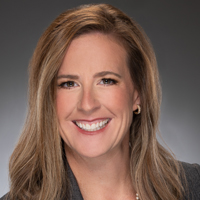
There are a multitude of articles and whitepapers in existence that address the challenge of navigating the many changes employees and business owners face upon the sale of their financial services firms. In many cases, however, these publications fail to address another group of individuals, who naturally will experience some of these very same changes. Of course, I am referring to the clients of these firms.
Many of these clients have worked closely with their advisor and service team for decades and as such, experiencing this sort of change may result in feelings of uncertainty, hesitation and even anxiety. This is something I experienced firsthand with my own clients back in 2017, when my firm of 20 years partnered with my current firm, Merit Financial Advisors.
As I reflect on the transition itself and the subsequent impact on our clients, three major themes come to mind, which I feel are prevalent across the industry, especially with the increase in M&A activity we are currently experiencing.
1. There is no such thing as over-communication! Do not assume the webinar you conducted was viewed by all, or the carefully crafted email you sent was read by the masses. News of your transition is important, and you need to create multiple avenues in which to reach your client audience with ongoing updates and developments.
The most effective method of addressing big news like a merger or an acquisition is face-to-face and in person. A townhall-style event is also a great venue in which to explain the new partnership and provide the clients with an opportunity to ask questions or express concerns. Immediately following this type of event, we often produce a short video that we distribute via email, which includes a summary of the event for those who were unable to attend. The summary is also beneficial for those who are leery of video links or simply have trouble utilizing this sort of technology.
Speaking of technology, I should also mention that face-to-face and townhall-style events can easily be accomplished via Zoom or similar technology. The onset of the COVID-19 pandemic forced most of our clients to embrace the use of virtual communication, and now we find that many are quite proficient in the use of Zoom, WebEx and even Facetime, which has allowed us to keep the lines of communication open and tend to “business as usual,” even amidst a global pandemic. In our experience, topics of importance tend to be received far better if a familiar face is visible to deliver the news. Virtual communication methods have greatly enhanced our ability to communicate effectively, even in the most extraordinary of circumstances.
Last, but certainly not least, disseminating important information via good, old fashioned “snail mail” is imperative, especially if you have an older client base. As it relates to our older clients, with their permission of course, we are also diligent in making sure we include their adult children in all communication and correspondence. Our firm prides itself in being a multi-generational firm. We want to ensure our older clients are comfortable and confident with any transition, and we want to minimize any anxiety their adult children may have related to changes that will impact their parents. Through the natural course of this sort of openness and transparency, meaningful relationships with the adult children often develop, thus creating the incredible opportunity to serve multiple generations.
2. Always begin with what is not changing! Oftentimes, we may find ourselves hesitant to boldly embrace change. Our clients are no different. I am often asked “how soon” advisors should inform their clients of a transition. To that I say, as soon as the wheels are in motion and there is no going back. The earlier, the better! Having a client learn of a transition from any other source than you, can often lead to frustration and angst, which you want to avoid at all costs. Once informed of a transition, long-term clients will often have multiple questions to which they seek answers.
In my experience, some frequently asked questions involve topics such as: Who will be monitoring their investments? Will their fees increase? Will their service team also change? In many cases, the answer to these questions is simply, “No, these aspects of our current engagement will not change,” which often quickly alleviates any anxiety they may be feeling related to the transition. Be sure to clearly spell out these things and consistently remind them of what is not changing, especially in the first few months post-transition.
In my experience, it is also beneficial to ensure that any/all communication related to a transition comes from an actual person, usually their advisor, instead of the greater organization. During our transition, important correspondence came not from the “old firm” or the “new firm,” but directly from me, the person with whom they maintained the trusted relationship. This seemed to instill a sense of comfort in most clients.
Firms should also be very methodical regarding branding and especially branding changes. Sometimes, I recommend waiting at least 12-18 months to fully rebrand, just to ease the clients into the “visual” of the new organization. Fast forward a few years and because these techniques worked so well in my own experience, Merit provides similar language to firms we acquire, to ensure they too are better able to calm the waters, minimize transition anxiety and set the tone for what the future holds once all is said and done.
3. Start and end with the “why!” Throughout the course of your working relationship, you make promises to your clients, and you take those promises very seriously. You want to ensure that should something happen to you, in your absence, they would find themselves in competent, capable, and caring hands. You want your clients to have access to the best investment platforms, the most robust technology, the most enhanced cybersecurity, and a strong team of professionals with core competencies in many areas. You want to provide your team with opportunities for growth and development. Whatever your reasons, share them!
If the transition is fundamental to your succession plan, then share that information as well. Many of your clients are already reaping the fruits of their many years of labor and enjoying life as retirees. Do they expect you to die in your swivel chair? Doubtful! Be open and transparent about your “why.”
Speaking of retired clients…
For clients who are still actively working and very much in the accumulation phase of their lives, a change in name on the door or a change to your website and logo may not carry much significance. Their portfolio might be compared to a beautiful piece of art: They admire it and look at it every now and then; however, it has not yet become a main point of focus.
Yet what about your retired clients? Aside from their family and their personal health, they strongly prioritize the state of their investment portfolio, and who can blame them? The wealth they have amassed allows them to live their current and desired lifestyle; provides a mechanism for helping their children and grandchildren; and, most importantly, it must last them for the rest of their lives! No wonder these clients may experience heightened anxiety related to a major change in your firm.
The in-person meetings are often critical for these clients. News of a transition is not the sort of news they want to receive over a phone call or as part of a group event/meeting. They want to sit face-to-face with you and receive all the reassurance necessary that they will be in good and capable hands going forward; and they do certainly deserve this time and attention.
The world of M&A in the financial services industry can, no doubt, be a challenging one to navigate. Teaming up with a seasoned professional in this field is essential and will significantly increase the likelihood of a smooth transition for you, your team and especially for your valued clients.
Kay Lynn Mayhue is the president of Merit Financial Advisors. Merit is based in Alpharetta, GA, with 18 additional offices throughout the U.S. As of December 31, 2020, Merit’s assets under management totaled over $4.84 billion ($2.97 billion in advisory, $1.87 billion in brokerage assets) and $111 million in assets under advisement. Merit seeks to establish, educate and satisfy the financial goals of its clients and provide community for its independent advisor partners through meaningful relationships, expanded capabilities and synergies needed to catapult growth. Merit is affiliated with LPL Financial.







